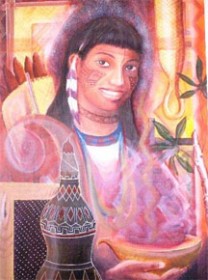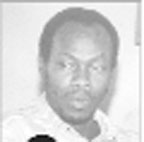In a recently published book on the early Caribbean integrationist, legislator, journalist and novelist, ARF Webber, the author Selwyn Cudjoe, in beginning a chapter entitled ‘Colonies in Search of A Nation,’ quotes from Benedict Anderson’s Imagined Communities (1983):
“Nations inspire love, and often profoundly self-sacrificing love. The cultural products of nationalism – poetry, prose fiction, music, plastic arts – show this love very clearly in thousands of different forms and styles.”
Such an observation, shared instinctually by many of us without being as clearly expressed or understood, bears repeating particularly when cultural institutions strive constantly to illustrate and enhance the value of their ‘cultural products’ to the larger society, not to mention the value of the artists responsible for these products in all their variety.
The acceptance of artists, to whatever degree in their society, whether they are a harmonious or dissenting part of the latter, reflects on that society’s taste, judgement and understanding and can be a measure, as much as anything else, of its evolution. Further, the everyday achievements of our collective lives, ephemeral and fleeting as they are, leave behind most notably the objects and structures of creative and artistic activity, which then come to represent the age in which they once occupied a particular, if specialized place, as part of personal, social or economic ritual.
Art can therefore play a powerful role in our self-definition, though in actuality it is only one part of many manifestations of a society, of a community of citizens, of a nation. As Raymond Williams, the literary and cultural critic, noted, in The Long Revolution (1961):

“Human community grows by the discovery of common meanings and common means of communication…and all our communication systems, including the arts, are literally parts of our social organization….Since our way of seeing things is literally our ways of living, the process of communication is in fact the process of community: the sharing of common meanings, and thence common activities and purposes; the offering, reception and comparison of new meanings, leading to the tensions and achievements of growth and change.”
This ‘sharing of common meanings… and purposes’ and the ‘offering of new meanings, leading to… growth and change,’ is as good a description as any of the process of a nation discovering itself and forging the achievement of nationhood.
The works in our current exhibition can be seen as part of that process. Though not overtly or consciously nationalistic or patriotic in form or expression, they are artists’ interpretations of their physical, spiritual and psychological engagement with a country and its people, and their lived experience of it, as part of a society which provides support or challenge to their creative forces and activities. Their works can thus be seen as identities, as reflections, of our national life.
In marking the occasion of our change from colonized status to independent nation 43 years ago, the work of our contemporary artists can also be seen as an indicator of the current moment in our progress to nationhood and self-understanding. Our exhibition presents established and mature National Collection artists, alongside younger practitioners in early stages of their careers, whose work nevertheless shares common themes and trends which highlight recurring interests as they engage with the challenge of interpreting Guyana, and what it means to be Guyanese.
Physically and symbolically, for example, Guyana is interpreted through abstractions of landscape, by leading artist George Simon, and by younger artists notably influenced by him such as Akima McPherson and Anil Roberts, both University of Guyana (UG) graduates: through Simon’s general engagement with students as guide and mentor, and as a lecturer at the University of Guyana assisting in the Creative Arts Division and as the Head of the Amerindian Research Unit. McPherson uses bright washes and layers of colour and undulating line and form, while Roberts includes objects and imagery in his compositions reflecting his Makushi Amerindian heritage. By contrast, Ohene Koama, though also constructing horizontal, elongated images which reflect the depth, mystery and challenge of the Guyana landscape, departs into a distinctive, resonant palette where angular lines contrast with rich fields and patches of colour.
Wider social themes are explored where human emotions and the complexities of the human condition are referred to, interpreted either representationally, as by Lori-Ann Jacobs, another UG graduate, in her figure studies, or more esoterically and in intensely personal expression via the abstract form and language of colour and shape of Terence Roberts, Derrick Callender, and Carl Anderson. The natural world is also depicted straightforwardly, as in Anderson’s impeccably technical and vivid flower studies, but also as part of a wider, personally symbolic environment, as in the compositions of Anil Roberts.
A distinctive palette and accomplished handling of paint are displayed by Jynell Osborne, a recent graduate of the UG Fine Arts programme, while Lloyd Blanchard, a 2009 graduand of this programme, extends into social commentary reflecting his minor study area of Graphics, as well as earlier immersions into ancient Amerindian graphology, the earliest of Guyanese art forms, via his triptych, ‘Timehri to Aishalton’ (a reference to place names as well as petroglyph sites and types). Thurston Brown, a Burrowes School of Art graduate, experiments in searching for form with abstract shapes and application of colour.
All of these young artists have been outstanding graduates of the Burrowes School of Art and or the University of Guyana, who are part of this exhibition not only because of their promising work but also because of their commitment shown not only to formal study but to an engagement with wider activities in the area of the visual arts and arts in general, indicating an admirable openness to new ideas and keenness to absorb experiences and exchanges on offer, and reflecting a dedication towards their chosen areas of emergent professionalism. Some, such as Lloyd Blanchard and Akima McPherson, have also assisted in and participated in the organizing of arts events, such as Carifesta X 2008 planning and administration, or the Guyana Women Artists Association’s organization and exhibitions. Ohene Koama has organized events for and with the Guyana United Artists, and has worked for the past five years as Curatorial Assistant at the National Gallery. Koama, McPherson, Osborne and Jacobs have been or are teachers of art at various levels in the education system.
Alongside them are exhibited accomplished artists such as sculptors Oswald Hussein and Winslow Craig, always exemplars through their dynamic engagement with their materials and profoundly felt imagery; and Roaland Taylor, like Hussein a Lokono (Arawak) artist from St. Cuthbert’s, producing his totem-like forms reflecting the mysteries and power of myth and everyday beliefs. Of particular note and cutting an admirably singular path is Betsy Karim, painter and fabric artist, who has steadily developed and widened her interests and themes with consistency and fidelity to her personal vision, augmenting this development with an attendant elaborateness of technical execution, incorporating appliquéd and stitched decoration into her closely worked paintings on fabric. Like Terence Roberts, Callender, Anderson and Simon, these are all artists with whom much can be shared and exchanged and from whom much can be learnt.
Together they reflect the phenomenon of Guyanese visual arts at the current time that can be seen as interesting, challenging, significant – this should always be the view, not only considered so in retrospect or hindsight. Within their images we may seek identity, or aspects of ourselves, as individuals, and as a collective people, as our national journey continues.
Elfrieda Bissember






